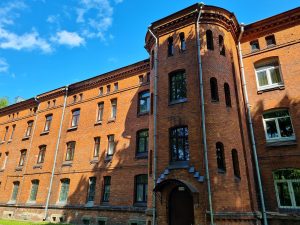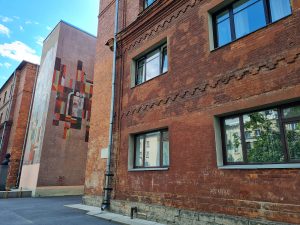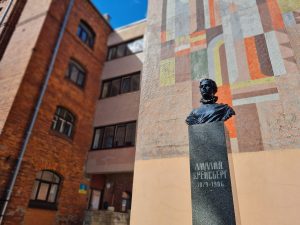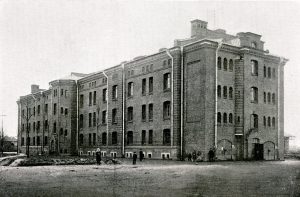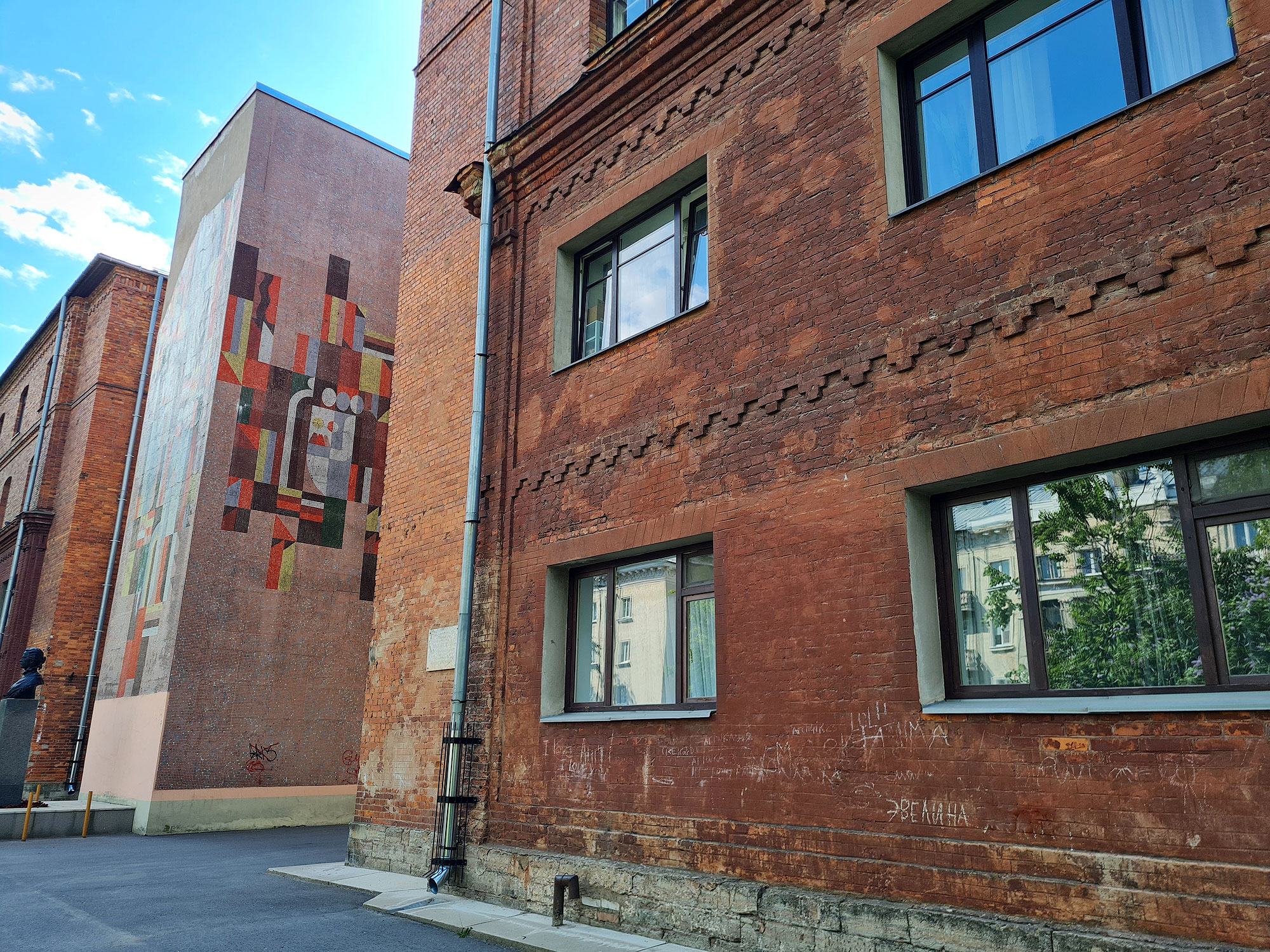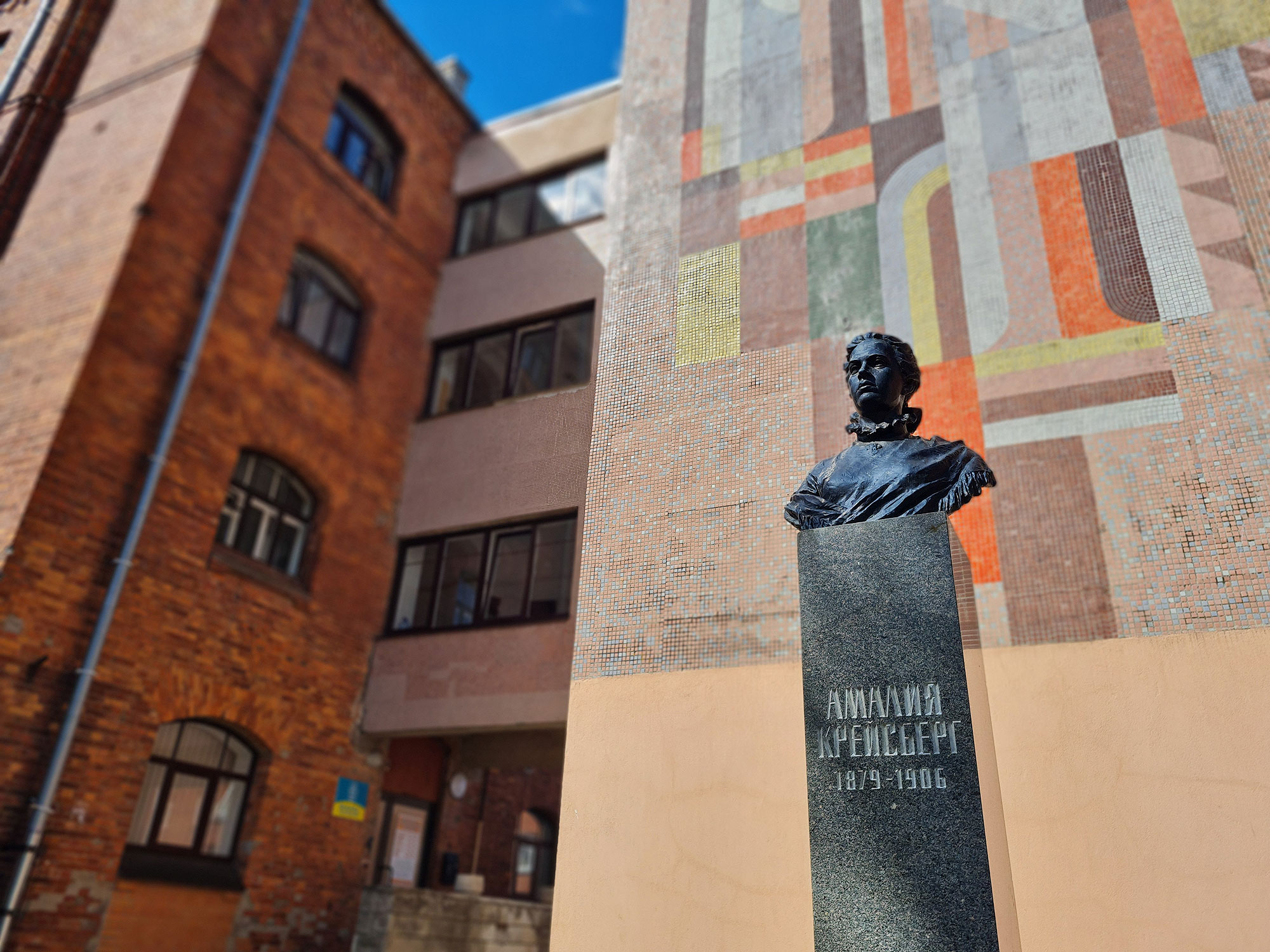On the corner of Gerassimov and Joala streets and inside the block, there are five more historic brick barracks that have survived throughout the years. The buildings are divided into sections and were completed around 1901. At that time the number of factory workers was growing very rapidly and new living space was urgently needed.
Some of the barracks of that period have two and others have three floors with 48 and 76 or 108 apartments accordingly. In these barracks, each room had a stove and thick full wall without the barred section seen in the old barracks. Only long-serving employees were allowed to live in such comfortable barracks.
The third and the fourth floors were built on top of the barracks on Joala Street at the end of the 19th century and then during the Soviet period. The windows in some barracks were enlarged. Four of the five barracks are still functioning as apartment buildings today.
On Joala Street, in front of a cheerfully colored panel created in the 1970s, there is a bust of Amalie Kreisberg, a young aspiring revolutionary, who was a Kreenholm weaver. Her life ended in Jamburg (now Kingissep town in Russia) prison, when she was only 28.
Amalie was a genuinely Kreenholm girl. She was born into a family of two weavers and was the second of four children. She went to school for two years, which was common for a girl at that time. When she was 15, she started working on the fourth floor of the Old Spinning Factory next to her mother. She could speak both Estonian and Russian, which was rather common for Kreenholm in the time of the Russian Empire. The girl was undeniably talented: she danced, sang, took part in the “Fighter” show, playing serious roles of people older than her. In 1904, young Amalie became a member of the Communist Party and the next year she was elected a headworker. In November, 1905 she became a member of the Narva city committee of the newly formed Social Democratic Workers’ Party. It was certainly a remarkable political career for a young woman at that time.
Amalie’s contemporaries do not recall her as a great public speaker, but she was one of those who gave a speech at the Kreenholm rallies at the peak of the 1905 revolution. As her sister said, Amalie’s mother and friends would tell her not to be so brave and to be more careful. The factory director demanded to end the strike, threatening to fire the strikers, which would automatically result in being thrown out of the cramped barracks room they shared with their families. Amalie’s home was in one of the new barracks.
Amalie was arrested in January 1906, after another strike. Her prison journey was difficult, initially she spent 5 or 6 days in the Kreenholm detention house, then she was moved to the city prison at the Town Hall. After that she was taken to Tallinn, then brought back to Narva city prison, and then finally sent to Jamburg. She died in the prison hospital on April 29. According to her mother, she was healthy before being admitted to the hospital.
On May 1, a one-day strike was announced in Narva, and Amalie’s funeral fell on that same day. Imagine a procession in red colors: men with red ribbons over their shoulders, red ribbons on their chests, women in red shawls. Newspapers at the time wrote the following: The headline was “The deceased brought back home.” The article read “The girl A.K., detained in the Jamburg jail was found dead there. On May 1, her body was brought overland from Jamburg to Narva by horses. The deceased was brought to the church in Joaorg, where an encounter between the soldiers and the people took place. Singing songs and the red memorial signs were banned…” The army confiscated the body and handed it over only the next day. Amalie Kreisberg’s neglected grave is in the Siivertsi cemetery.
Making Amalie the main character in Narva’s bid to become the cultural capital of the European Union was quite unexpected and daring. The leaders of this movement openly debated whether the young woman was a communist revolutionary made famous by the Soviet authorities for propaganda purposes or if she was a feminist of her time.
